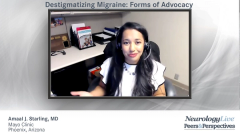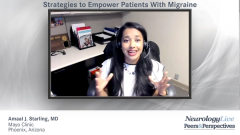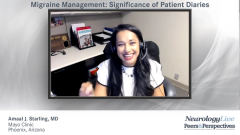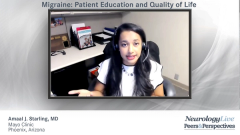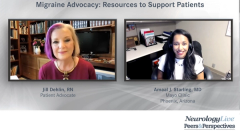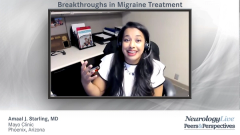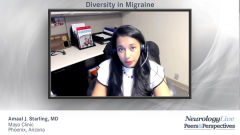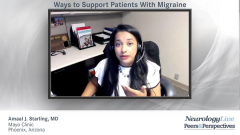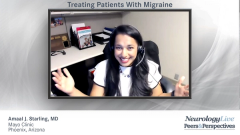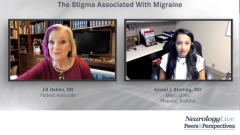
Migraine Advocacy: Resources to Support Patients
Educational resources that health care professionals should consider recommending to help support patients with migraine.
Episodes in this series

Jill Dehlin, RN: As you know, I’m quite active nationally as a migraine advocate, and there have been some pretty low times in my life. Honestly, it’s the group that keeps me going. If I didn’t have my migraine advocacy community, it would be a really lonely journey. Groups that work on advocacy include the American Migraine Foundation, the National Headache Foundation, the Alliance for Headache Disorders Advocacy, and their Headache on the Hill initiative, and Miles for Migraine, which has races, or walks, or relax events for people. People with migraine can interact and be with the people who get us, they understand us.
I can’t tell you how much it has meant to me as a person with migraine to have other people in my life who understand the journey we’re going through, the struggle, and the disability. We boost each other up and give each other suggestions. But I’ve also had to be very careful in the way that I suggest resources to people because if you go to somebody’s blog, you’re not always guaranteed that that information is going to be accurate. What kind of resources, do you have specific ones that you like to recommend?
Amaal J. Starling, MD: Yes. I think a lot of the ones you named are great. Besides the American Migraine Foundation and Miles for Migraine, the other one I often will recommend is the Migraine World Summit. The Migraine World Summit has annual educational videos from experts around the world regarding migraine and other headache diseases. In addition, they’ve been able to create something called the Migraine Masterclass.
The Migraine Masterclass has videos and blogs that people can read, and questions they can be quizzed on that can be very helpful. The Society for Women’s Health Research also has a migraine tool kit that’s really helpful. Of course, the American Migraine Foundation is producing content on a weekly basis, especially content coming directly from the American Headache Society, its sister organization. That’s always nicely up to date. Participating in Headache on the Hill is a beautiful event that’s with physicians, health care providers, and patients, bringing people together.
I think you bring up a great point, Jill, about how much advocacy does for the patient. Since this program is for physicians and health care providers, I also want to emphasize how much participating in advocacy can do, not only for the physician-patient relationship but also for physicians themselves. For me, participating in advocacy at the bedside, at the level of the institution, and at the level of legislative advocacy, has really been my antidote for burnout.
When I’m at the bedside with patients, and I’m providing patient awareness and education such as providing them with resources, that’s helping me care for this patient with chronic disease. But then as an individual, just like you said Jill, I am getting involved in the migraine community. I’m participating in things like Miles for Migraine, Headache on the Hill, and things like Shades for Migraine which is as simple as putting on some sunglasses in June, taking a picture, and posting it on social media. Becoming a part of a community, becoming visible and making the invisible disease of migraine visible, has been such an important part of my antidote for burnout. I feel connected to other headache specialists, other neurologists, and to my patients, at a level that I didn’t before I became involved in advocacy.
Institutionally, I’ve enjoyed taking headache medicine to that next level by making headache medicine and migraine as visible as I can. Every opportunity that I have to mentor, teach, lecture, and talk to media, I do. I never decline an opportunity to speak about the disease of migraine and other headache disorders. I just gave a talk on migraine and other headache disease pharmacology at the medical school at the Mayo Clinic. From just a 2-hour lecture, I have 3 individuals out of a class of 50 who are now interested in the practice of headache medicine.
Jill Dehlin, RN: That’s amazing.
Amaal J. Starling, MD: They are all participating in research and writing projects with me. If all of us participate in this, we will have a plethora of headache specialists to meet the needs of the 40 million people with migraine, and at that level, we’ll be able to break down these barriers.
Jill Dehlin, RN: Thank you for watching this Neurology Live® Peers & Perspectives®. If you enjoyed the content, please subscribe to our e-newsletters to receive upcoming programs and other great content right in your inbox.
Transcript Edited for Clarity
Newsletter
Keep your finger on the pulse of neurology—subscribe to NeurologyLive for expert interviews, new data, and breakthrough treatment updates.

